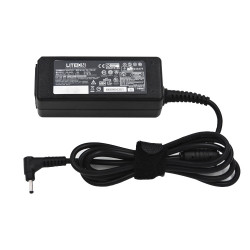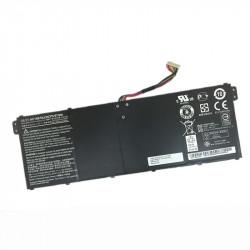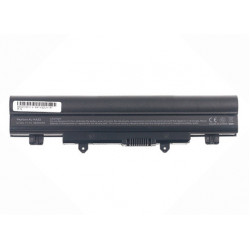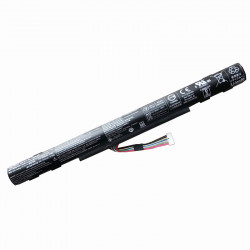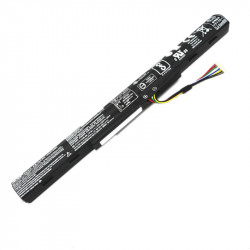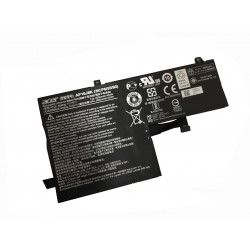Nope, you don't need to have an account to place an order. You can simply shop, add items to the cart, and check out.
We accept PayPal payment methods. PayPal payment system supports Mastercard, Visa, Discover.
All of our products are shipped by UPS, DHL, Fedex, EMS or by Post, depending on whichever service has the shortest delivery time to your location.
UK 7~15 days (Royalmail)
Ireland and EU 10~14 days (Royalmail-->Local Mail System)
USA 7~15 days (Air Parcel--->USPS )
Other Countries < 15 days. (Air Parcel--->Local Mail System )
Returns within 30 days from receipt of order can be returned for exchange, refund or credit at FoxStore 's discretion. Please be aware that specific manufacturers have more restrictive return policies. All products returned must be 100% complete, contain all original boxes and packing materials
Ni-Cd, Ni-MH and Li-ion are all fundamentally different from one another and cannot be substituted unless the device has been pre-configured from the factory to accept more than one type of rechargeable battery. The difference between them stems from the fact that each type requires a different charging pattern to be properly recharged. Therefore, the portable device's charger must be properly configured to handle a given type of rechargeable battery.Please refer to your owner's manual to find out which rechargeable battery types your particular device supports, or simply use our search engine to find your device. It will automatically list all of the battery types particular device supports.
There are two ratings on every battery: volts and milliamp-hour (mAh). The voltage of the new battery should always match the voltage of your original. Some of our batteries will have higher amp-hour ratings than the original battery found in your device. This is indicative of a longer run-time (higher capacity) and will not cause any incompatibilities. Remember: in some cases, the voltage will differ from the original battery. This often happens when both a Li-Ion battery and a Ni-Mh battery are available for the laptop.
The life of a rechargeable battery operating under normal conditions is generally between 500 to 800 charge-discharge cycles. This translates into one and a half to three years of battery life for the average user. As your rechargeable battery begins to die, you will notice a decline in the running time of the battery. When your two hour battery is only supplying you with an hour's worth of use, it's time for a new one.
I accidentally removed the card before shutdown was completed, and now I can't access the card. Is there any way to save the card and/or my data?
The card itself can most likely be saved by reformatting it in the device. This will cause the loss of all data on the card, but you should be able to re-use the card with no problem. If you need to recover the data, do not reformat it. If the data is irreplaceable, you may want to use a professional data recovery service to attempt to retrieve the information. If you want to try recovering it yourself, put the card into a card reader attached to a computer running Windows and try running "Scandisk". If "scandisk" asks to fix the file system on the card, let it. This may allow you to read the disk. If so, immediately copy the files you want to save to different media, or your hard drive. Once done, the card should be reformatted before being used again.
New batteries are shipped in a discharged condition and must charged before use. We generally recommend an overnight charge (approximately twelve hours). Refer to your user's manual for charging instructions. Rechargeable batteries should be cycled - fully charged and then fully discharged - 2 to 4 times initially to allow them to reach their full capacity. (Note: it is perfectly normal for a battery to become warm to the touch during charging and discharging).New batteries are hard for your device to charge; they have never been fully charged and are therefore "unformed". Sometimes your device's charger will stop charging a new battery before it is fully charged. If this happens, simply remove the battery from your device and then re-insert it. The charge cycle should begin again. This may happen several times during your first battery charge. Don't worry; it's perfectly normal.
The Lithium Polymer (Li-Polymer) Battery ?
A battery technology that similar to Lithium-ion. Perform the same task with Lithium-ion battery, but can be shaped much thinner.The Li-polymer differentiates itself from other battery systems in the type of electrolyte used. The original design, dating back to the 1970s, uses a dry solid polymer electrolyte only. This electrolyte resembles a plastic-like film that does not conduct electricity but allows an exchange of ions (electrically charged atoms or groups of atoms). The polymer electrolyte replaces the traditional porous separator, which is soaked with electrolyte.The dry polymer design offers simplifications with respect to fabrication, ruggedness, safety and thin-profile geometry. There is no danger of flammability because no liquid or gelled electrolyte is used.With a cell thickness measuring as little as one millimeter (0.039 inches), equipment designers are left to their own imagination in terms of form, shape and size. It is possible to create designs which form part of a protective housing, are in the shape of a mat that can be rolled up, or are even embedded into a carrying case or piece of clothing. Such innovative batteries are still a few years away, especially for the commercial market.Unfortunately, the dry Li-polymer suffers from poor conductivity. Internal resistance is too high and cannot deliver the current bursts needed for modern communication devices and spinning up the hard drives of mobile computing equipment. Although heating the cell to 60¢XC (140¢XF) and higher increases the conductivity to acceptable levels, this requirement is unsuitable in commercial applications.
"Smart" / "Intelligent" batteries have internal circuit boards with smart chips which allow them to communicate with the notebook and thus better monitor battery performance, output voltage and temperature. Smart batteries will generally run 15% longer due to their increased efficiency and also give the computer much more accurate "fuel gauge" capabilities to determine how much battery running time is left before the next recharge is required.
Ni-Cd batteries, and to a lesser extent Ni-MH batteries, suffer from what's called the "Memory Effect". What this means is that if a battery is continually only partially discharged before re-charging, the battery "forgets" that it has the capacity to further discharge all the way down.To illustrate: If you, on a regular basis, fully charge your battery and then use only 50% of its capacity before the next recharge, eventually the battery will become unaware of its extra 50% capacity which has remained unused. Your battery will remain functional, but only at 50% of its original capacity. The way to avoid the dreaded "Memory Effect" is to fully cycle (fully charge and then fully discharge) your battery at least once every two to three weeks. Batteries can be discharged by unplugging the device's AC adaptor and letting the device run on the battery until it ceases to function. This will insure your battery remains healthy.


